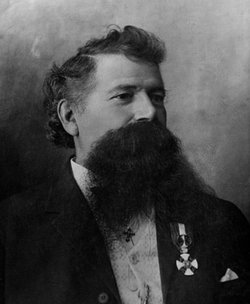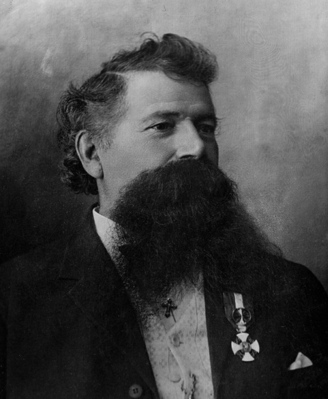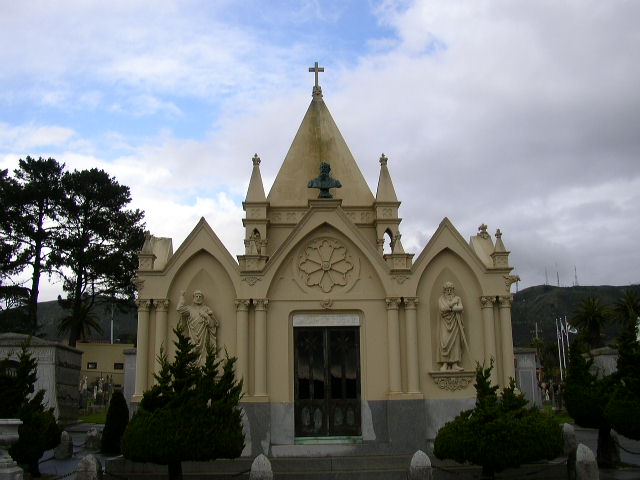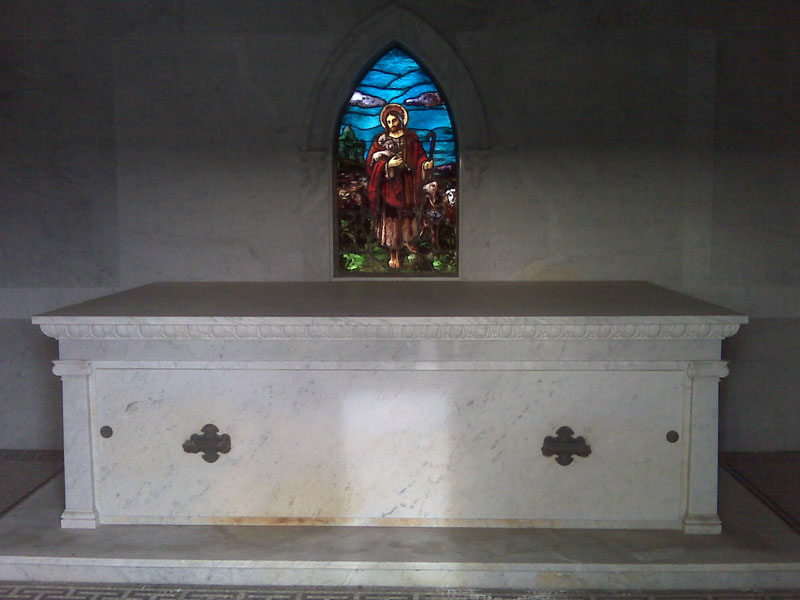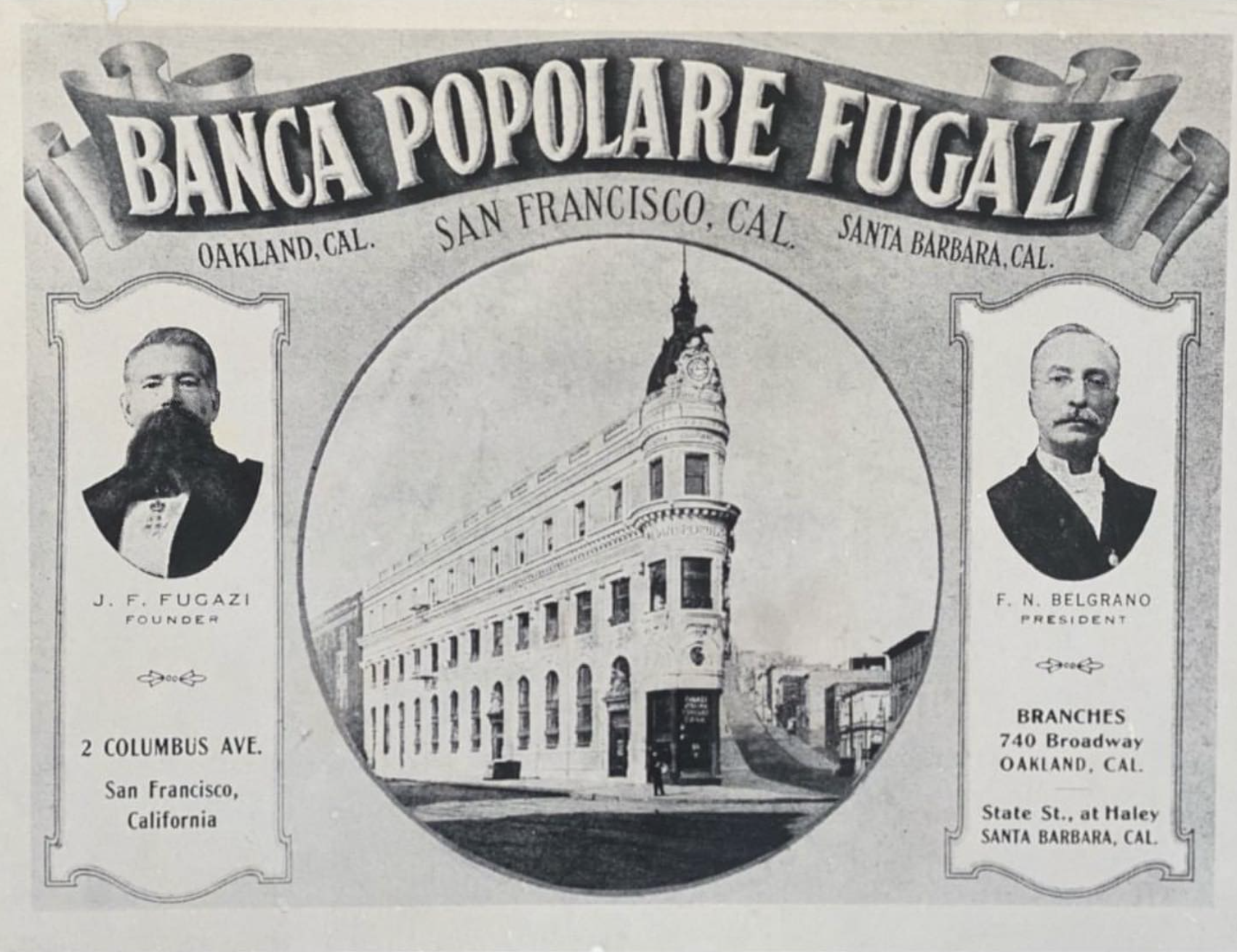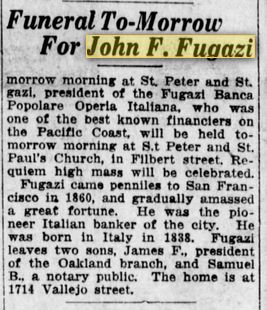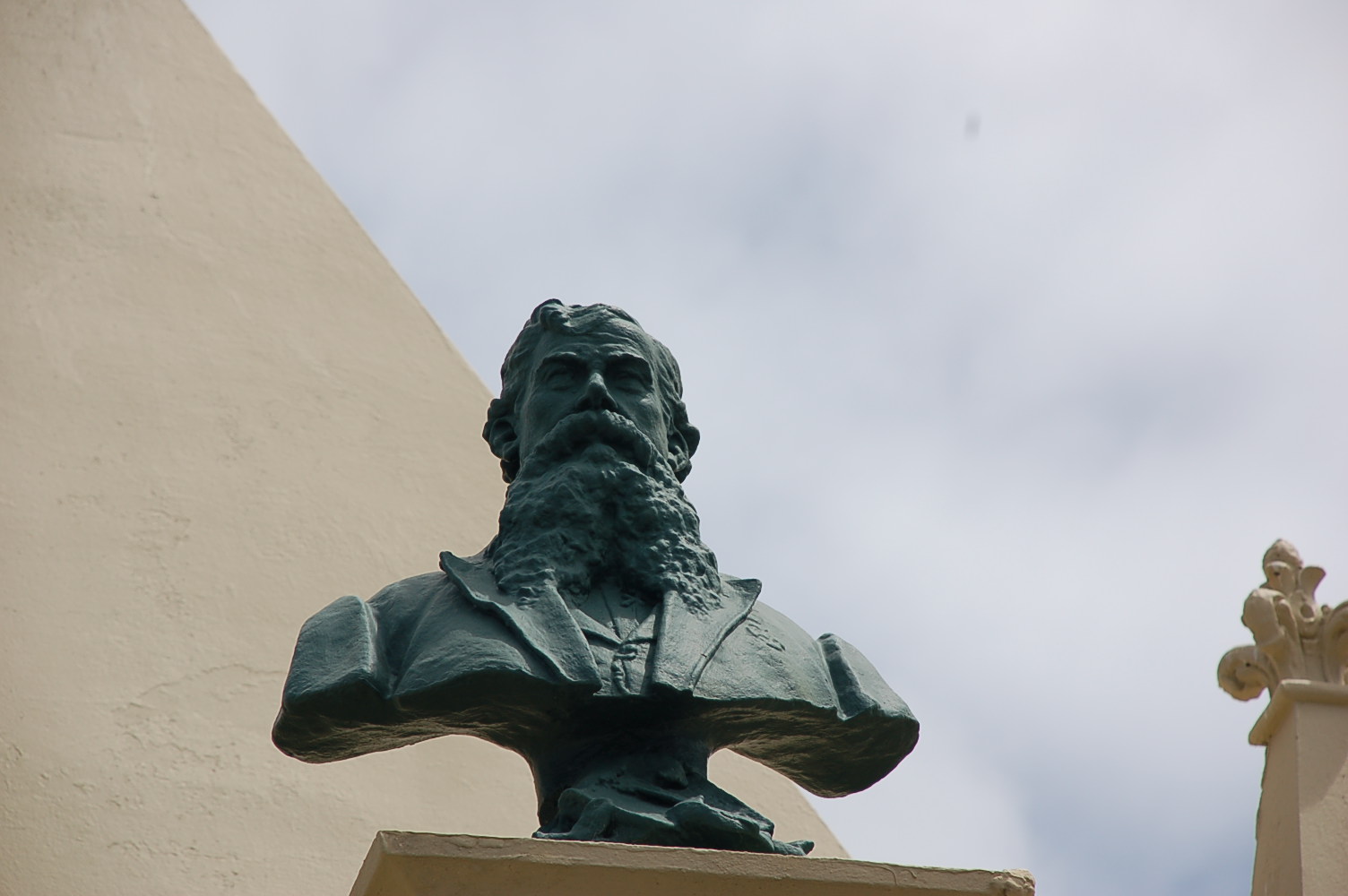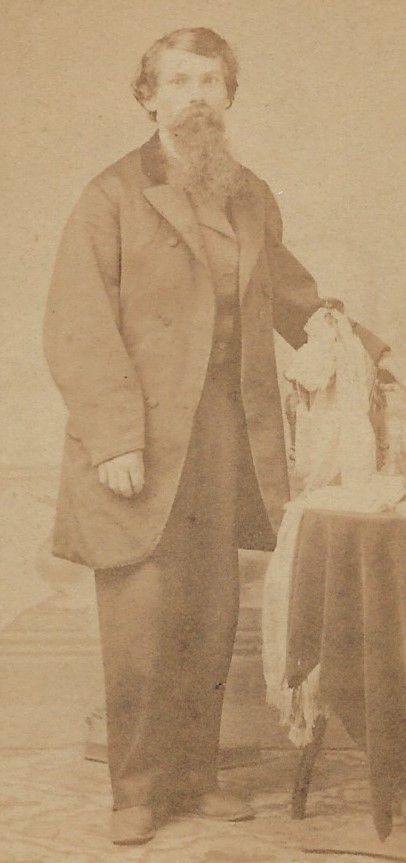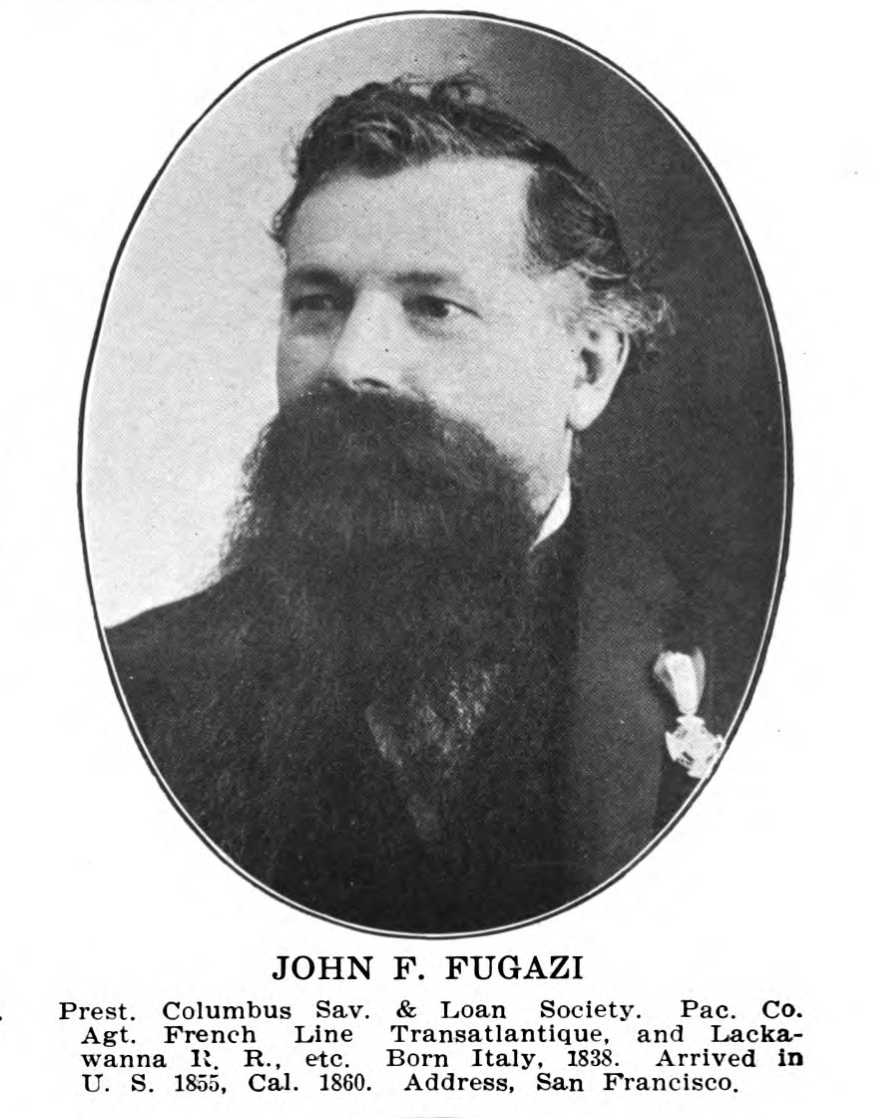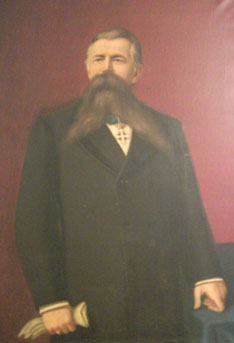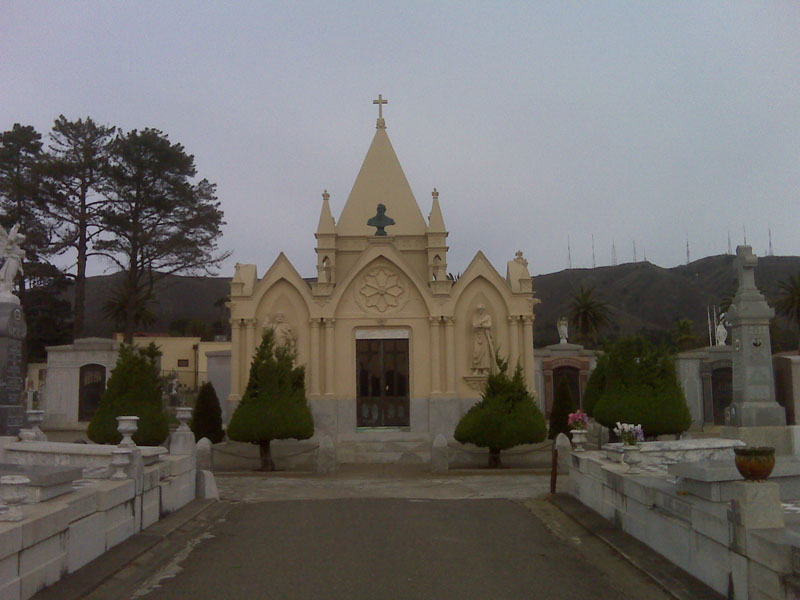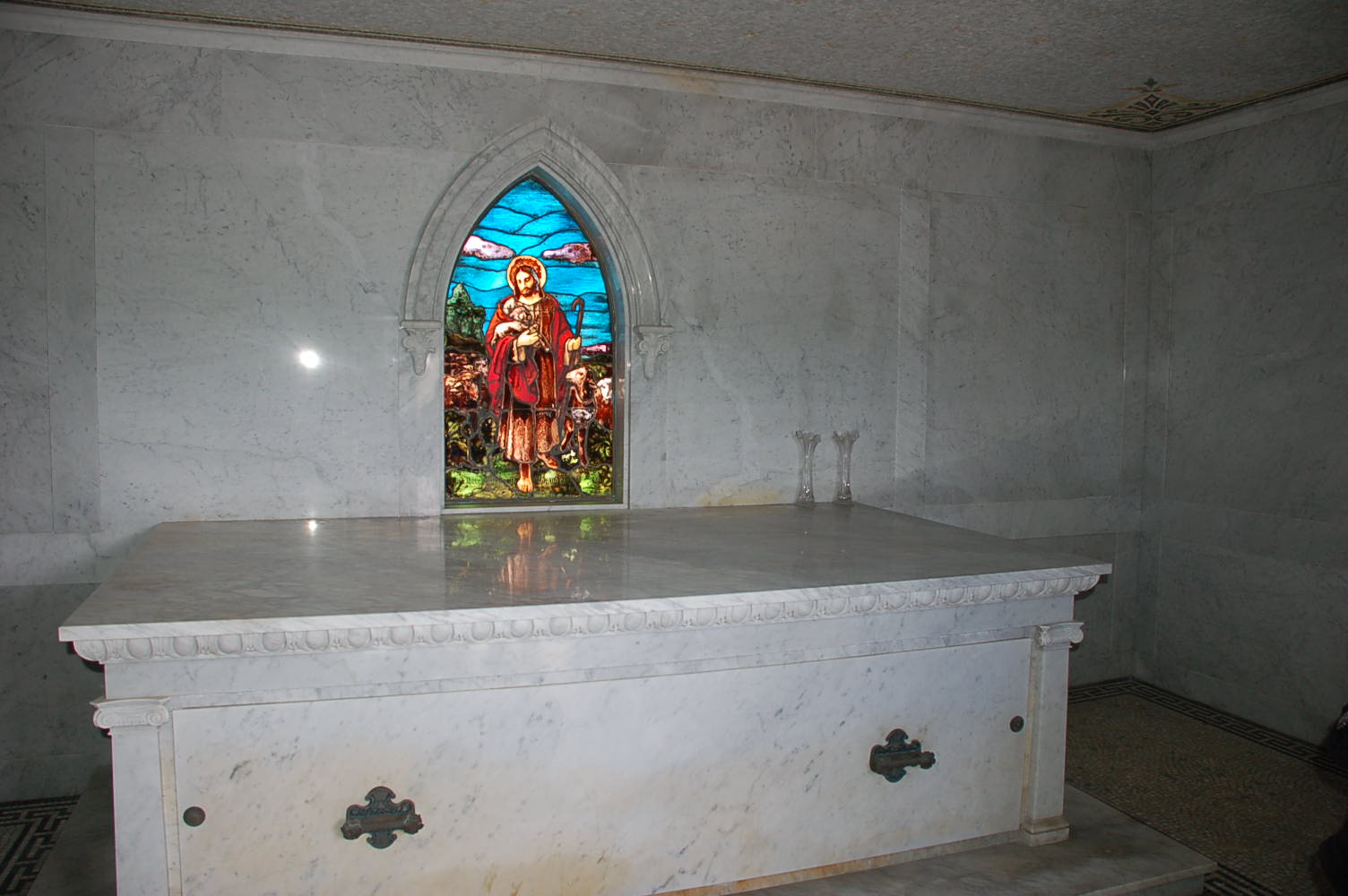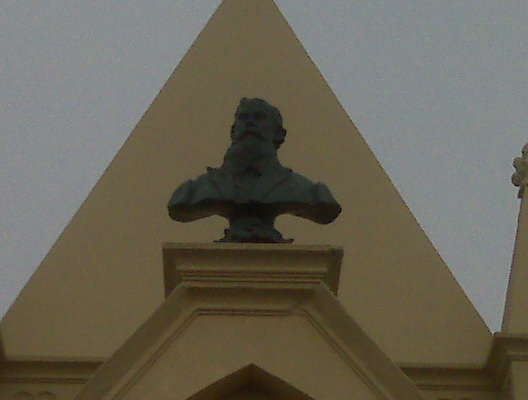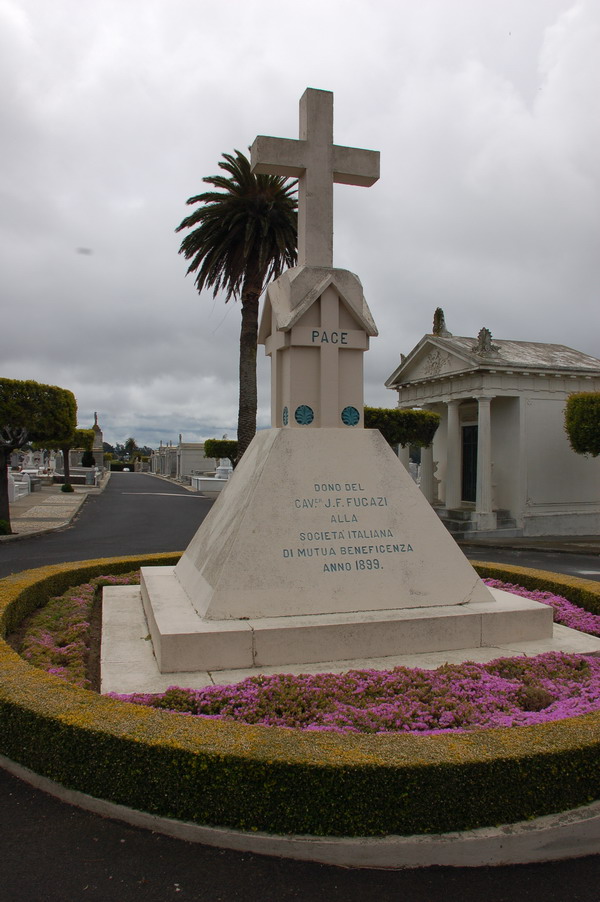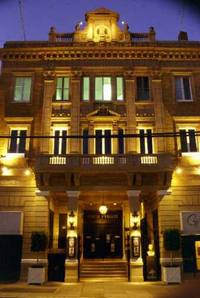When he arrived in San Francisco, California he established two relatively unsuccessful businesses. The first, Tintura di Capelli Orientale, was a line of hair products. The second was a newspaper called La Scintilla Italiana. Fortunately he was more successful in the travel business. He founded "John F. Fugazi and Co.," a travel agency which continues to prosper. He also started the Casa Italo-Svizzera-Americana with his partner Egisto C. Palmieri, selling tickets for various steamship lines, such as the White Star Line and Compagnie Général Transatlantique.
By 1900, his two sons, James and Samuel, were also working for the family firm. Mr. Fugazi retired from the travel business in 1911, but continued his involvement in other businesses.
His new bank, called Banca Colombo, had twenty subscribers and a capital stock of three hundred thousand dollars. By 1900 its resources exceeded a million dollars. Fugazi relinquished his position as bank president in 1905. Subsequently, in 1923, Banca Colombo merged with Andrea Sbarboro's Italian American Bank. In 1927 the combined Banca Colombo-Italian American Bank merged with A.P. Giannini's Bank of Italy, which would later be renamed the Bank of America. When the great earthquake and fire of 1906 all but destroyed San Francisco, Fugazi provided capital for rebuilding through another new bank, the Banca Popolare Operaia Italiana, which he incorporated in 1906 with $250,000 in capital. The bank did well and by the time of Fugazi's death in 1916 had over $7 million in assets.
Legacy: In 1928 Fugazi's second bank merged with the United Bank & Trust Company of San Francisco. This bank was eventually absorbed by A.P. Giannini's Bank of America.
Fugazi became one of the Italian community's most revered philanthropists. He gave his support to a number of Italian community organizations, such the Società Italiana di Mutua Beneficenza, which at the time, owned and operated the Italian Cemetery in Colma, California.
His best-known contribution to the Italian community of San Francisco is the Casa Coloniale Fugazi, a three-story building located at 678 Green Street in the heart of San Francisco's North Beach neighborhood which he endowed with a twenty thousand dollar fund for maintenance. It opened on February 12, 1913. The building is home to the Italian American Community Services Agency continuing Fugazi's philanthropic work in the Italian-American community and administers the Fugazi trust. A variety of Italian-American organizations regularly use the building, and the main floor is home to Steve Silver's Beach Blanket Babylon, the longest-running musical revue in the history of the American theatre.
In recognition of his philanthropy and community activities, King Victor Emanuel III of Italy conferred upon Fugazi the rank of Cavaliere Ufficiale (Knight Officer of the Kingdom of Italy), a title that Fugazi proudly appended to his name for the rest of his life. The man who was commonly known as Il papa della colonia (the father of the colony) died shortly after the completion of the private mausoleum that he had commissioned in the Italian Cemetery in Colma, California. Although it contains only a single sarcophagus, his mausoleum towers over all the other mausoleums.
When he arrived in San Francisco, California he established two relatively unsuccessful businesses. The first, Tintura di Capelli Orientale, was a line of hair products. The second was a newspaper called La Scintilla Italiana. Fortunately he was more successful in the travel business. He founded "John F. Fugazi and Co.," a travel agency which continues to prosper. He also started the Casa Italo-Svizzera-Americana with his partner Egisto C. Palmieri, selling tickets for various steamship lines, such as the White Star Line and Compagnie Général Transatlantique.
By 1900, his two sons, James and Samuel, were also working for the family firm. Mr. Fugazi retired from the travel business in 1911, but continued his involvement in other businesses.
His new bank, called Banca Colombo, had twenty subscribers and a capital stock of three hundred thousand dollars. By 1900 its resources exceeded a million dollars. Fugazi relinquished his position as bank president in 1905. Subsequently, in 1923, Banca Colombo merged with Andrea Sbarboro's Italian American Bank. In 1927 the combined Banca Colombo-Italian American Bank merged with A.P. Giannini's Bank of Italy, which would later be renamed the Bank of America. When the great earthquake and fire of 1906 all but destroyed San Francisco, Fugazi provided capital for rebuilding through another new bank, the Banca Popolare Operaia Italiana, which he incorporated in 1906 with $250,000 in capital. The bank did well and by the time of Fugazi's death in 1916 had over $7 million in assets.
Legacy: In 1928 Fugazi's second bank merged with the United Bank & Trust Company of San Francisco. This bank was eventually absorbed by A.P. Giannini's Bank of America.
Fugazi became one of the Italian community's most revered philanthropists. He gave his support to a number of Italian community organizations, such the Società Italiana di Mutua Beneficenza, which at the time, owned and operated the Italian Cemetery in Colma, California.
His best-known contribution to the Italian community of San Francisco is the Casa Coloniale Fugazi, a three-story building located at 678 Green Street in the heart of San Francisco's North Beach neighborhood which he endowed with a twenty thousand dollar fund for maintenance. It opened on February 12, 1913. The building is home to the Italian American Community Services Agency continuing Fugazi's philanthropic work in the Italian-American community and administers the Fugazi trust. A variety of Italian-American organizations regularly use the building, and the main floor is home to Steve Silver's Beach Blanket Babylon, the longest-running musical revue in the history of the American theatre.
In recognition of his philanthropy and community activities, King Victor Emanuel III of Italy conferred upon Fugazi the rank of Cavaliere Ufficiale (Knight Officer of the Kingdom of Italy), a title that Fugazi proudly appended to his name for the rest of his life. The man who was commonly known as Il papa della colonia (the father of the colony) died shortly after the completion of the private mausoleum that he had commissioned in the Italian Cemetery in Colma, California. Although it contains only a single sarcophagus, his mausoleum towers over all the other mausoleums.
